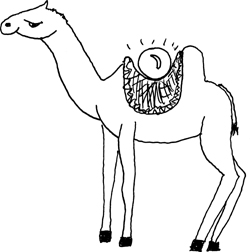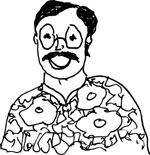
"Laziness, impatience, and hubris. Great Perl programmers embrace those virtues."
—Larry Wall
Perl is an all-purpose, open source (free software) interpreted language maintained and enhanced by a core development team called the Perl Porters. It is used primarily as a scripting language and runs on a number of platforms. Although inititally designed for the UNIX operating system, Perl is renowned for its portability and now comes bundled with most operating systems, including RedHat Linux, Solaris, FreeBSD, Macintosh, and more. Due to its versatility, Perl is often referred to as the Swiss Army knife of programming languages.
Larry Wall wrote the Perl language to manage log files and reports scattered over the network. According to Wikipedia.org, "Perl was originially named "Pearl" after the "Parable of the Pearl" from the "Gospel of Matthew." The parable is brief: A merchant is seeking pearls. He finds one that is so valuable and beautiful that he is willing to sell everything he has to purchase it. And in the end he is even wealthier than he was before. However you interpret this, it has very positive implications.

Before its official release in 1987 the "a" in "Pearl" was dropped and the language has since been called "Perl," later dubbed the Practical Extraction and Report Language, and by some, it is referred to as the Pathologically Eclectic Rubbish Lister. Perl is really much more than a practical reporting language or eclectic rubbish lister as you'll soon see. Perl makes programming easy, flexible, and fast. Those who use it, love it. And those who use it range from experienced programmers to novices with little computer background at all. The number of users continues to grow at a phenomenal rate.[1]
[1] Perl is spelled "Perl" when referring to the language, and "perl" when referring to the interpreter.
Perl's heritage is UNIX. Perl scripts are functionally similar to UNIX awk, sed, shell scripts, and C programs. Shell scripts consist primarily of UNIX commands; Perl scripts do not. Whereas sed and awk are used to edit and report on files, Perl does not require a file in order to function. Whereas C has none of the pattern matching and wildcard metacharacters of the shells, sed, and awk, Perl has an extended set of characters. Perl was originally written to manipulate text in files, extract data from files, and write reports, but through continued development, it can manipulate processes, perform networking tasks, process Web pages, talk to databases, and analyze scientific data. Perl is truly the Swiss Army knife of programming languages; there is a tool for everyone.
The examples in this book were created on systems running Solaris, Linux, Macintosh UNIX, and Win32.
Perl is often associated with a camel symbol, a trademark of O'Reilly Media, which published the first book on Perl, called Programming Perl by Larry Wall and Randal Schwartz, referred to as "the Camel Book."
